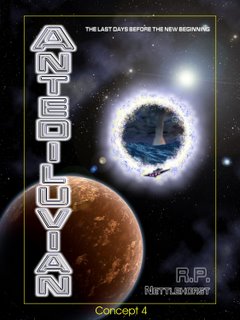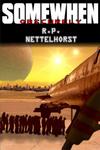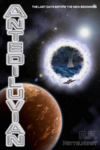Tuesday, May 30, 2006
Dan Simmons, the well-known science fiction author of Hyperion among other interesting books, has a website. In April, he posted an interesting short story of sorts, which generated a lot of comment from readers, some rather extreme, since it dealt with the ongoing Long War against Islamic Extremism. Now he's posted a commentary or response or explanation to his story. It is a long essay, but worth the read I think.
Thursday, May 25, 2006
Sunday, May 21, 2006
Jerry Pournelle likes to say that "despair is a sin." In case you've been watching the news lately and have have felt sorely tempted, a dash of perspective from Michael Barone at US News and World Report.
Friday, May 19, 2006
I read a rather interesting book review in Books and Culture last night while giving a Theological Systems midterm exam. It relates to textual criticism, odd scholarly bias, and a female apostle.
I redesigned the look of the Quartz Hill School of Theology website today; I also did laundry, and some rewriting on my next novel, Fades the Flower.
Wednesday, May 17, 2006
There are now over 150 known solar systems besides our own. For a complete, updated list of them, check out The Extrasolar Planets Encyclopedia. MSNBC reports today on the discovery of a new system 41 light years away with 3 Neptune sized planets, including one that is located in that star's habitable zone. That means it could, potentially, have life as we know it.
John Bunyan’s Pilgrim’s Progress is perhaps the world’s best known allegory. Christian, the protagonist, travels from the City of Destruction to the Celestial City. Along the way, he passes the Slough of Despond, Giant Despair, Doubting Castle, House of the Interpreter, and Vanity Fair. He faces troubles and pleasures of all kinds, meeting characters such as Worldly Wise Man and Hopeful. The story is to be understood as the picture of a man’s life from his conversion to Christianity until his death. It’s not a subtle piece of work—the names make things pretty obvious—but it has been popular; sales of the book are second only to the Bible.
George Orwell’s Animal Farm is another example of the genre, and it is not as obvious to most people what’s going on, since the names of the characters are not quite so transparent. Animal Farm is an allegory of the history of the Soviet Union. Napoleon is Stalin, Old Major is Marx and Lenin, and Snowball is Trotsky. The other characters in the novel can similarly be identified with historical figures. In college I took a history course called Twentieth Century Russia. Toward the end of the semester, my professor had us read Animal Farm. It made perfect sense then and the identifications were pretty easy.
As I’ve listened to the news of late, and watched criticism or even condemnation of the Israelis in their ongoing conflict with the Palestinians, I’ve thought about writing an allegory myself. Sometimes telling the story in analogous terms can help clarify what’s going on for those who might otherwise fail to recognize what should be obvious. Jesus taught in parables for this very reason. People can understand better when you change the setting and characters. It lets them see past the clouded and loaded terms, the obscuring fog of the yelling participants.
My allegory about the Israeli-Palestinian conflict would be the story of a black family that moves into an all white neighborhood after being chased out of the South by the KKK. They pay too much for a broken down fixerupper and then they work hard, plant grass, fix the broken windows and make it a nice place despite the constant griping and complaining and put downs of the neighbors. The black family refuses to leave, despite the nearly nightly crossburnings on their front yard, the periodic Molotov cocktails tossed through their front door, the robberies, and the shootings. Meanwhile, they face criticism at every turn from the local newspaper for reacting to the attacks against them. When they install a security system, they are condemned for their intransigence. When they arm themselves, they are “escalating the conflict.” When they shoot the rapist climbing in the daughter’s bedroom window, they are slapped with a wrongful death suit.
Their neighbors make a habit of comparing them to the KKK at every opportunity. Moreover, the police do nothing but issue warrants against the black family and cite them for building code violations. The city council decrees the neighbors should be able to build a barbecue and tennis court in their backyard, and that it is unreasonable for the black family to forbid their neighbors from having parties in their living room on Saturday nights. The rapist’s brother has filed a class action lawsuit demanding his right to sleep in the daughter’s bedroom. Meanwhile, the local paper editorializes about how “hostile and inhospitable the black family is. They need to reach out to their neighbors and find a way to get along.”
Another allegory might work if that one is unclear: in marriage counseling, both parties need to be interested in reconciliation if there is going to be much hope for saving the marriage. If the husband, for instance, wants to reconcile, but the wife wants the husband to drop dead, there’s little room for compromise. When the voices in her head tell her he’s an alien and she is mad because he keeps ducking every time she fires her shotgun at his head, how exactly is it his fault that the marriage isn’t a happy one? One can always point out that there are two sides to every conflict, but sometimes, one of those sides is simply nuts.
The Jewish people want peace more than anything. The Palestinians want the Jews to die more than anything. That makes it tricky to find a compromise. The sad reality of the Israeli-Palestinian conflict is that right now only one side wants peace. Maybe someday, if the Palestinians get tired of their situation, peace can happen. It did happen between Israel and Egypt, when the Egyptian President Anwar Sadat finally woke up and decided he was tired of being the Moslem world’s canon fodder and made peace with Israel. Now Israelis spend big bucks at tourist resorts in Egypt. Same thing with the Israelis and the Jordanians: they managed to sign a genuine peace accord. So it might happen someday between Israel and the Palestinians. But not until the Palestinians accept the idea that it’s okay for the Israelis to live.
One last thing, a bit of historical context. Jordan and Egypt controlled the West Bank and Gaza from 1948 until 1967. In that entire time, the Palestinians never sent suicide bombers against the Jordanians. The world never condemned Egypt as an occupier or demanded a Palestinian state on the West Bank. But there was never a shortage of violence and condemnation against the Israelis, anyhow.
But maybe it is the case that all the problems in the neighborhood are because of the nasty character of the family that moved into that rundown house. They really are inhospitable. It has nothing to do with the fact that they are black. The voices in my head told me so.
George Orwell’s Animal Farm is another example of the genre, and it is not as obvious to most people what’s going on, since the names of the characters are not quite so transparent. Animal Farm is an allegory of the history of the Soviet Union. Napoleon is Stalin, Old Major is Marx and Lenin, and Snowball is Trotsky. The other characters in the novel can similarly be identified with historical figures. In college I took a history course called Twentieth Century Russia. Toward the end of the semester, my professor had us read Animal Farm. It made perfect sense then and the identifications were pretty easy.
As I’ve listened to the news of late, and watched criticism or even condemnation of the Israelis in their ongoing conflict with the Palestinians, I’ve thought about writing an allegory myself. Sometimes telling the story in analogous terms can help clarify what’s going on for those who might otherwise fail to recognize what should be obvious. Jesus taught in parables for this very reason. People can understand better when you change the setting and characters. It lets them see past the clouded and loaded terms, the obscuring fog of the yelling participants.
My allegory about the Israeli-Palestinian conflict would be the story of a black family that moves into an all white neighborhood after being chased out of the South by the KKK. They pay too much for a broken down fixerupper and then they work hard, plant grass, fix the broken windows and make it a nice place despite the constant griping and complaining and put downs of the neighbors. The black family refuses to leave, despite the nearly nightly crossburnings on their front yard, the periodic Molotov cocktails tossed through their front door, the robberies, and the shootings. Meanwhile, they face criticism at every turn from the local newspaper for reacting to the attacks against them. When they install a security system, they are condemned for their intransigence. When they arm themselves, they are “escalating the conflict.” When they shoot the rapist climbing in the daughter’s bedroom window, they are slapped with a wrongful death suit.
Their neighbors make a habit of comparing them to the KKK at every opportunity. Moreover, the police do nothing but issue warrants against the black family and cite them for building code violations. The city council decrees the neighbors should be able to build a barbecue and tennis court in their backyard, and that it is unreasonable for the black family to forbid their neighbors from having parties in their living room on Saturday nights. The rapist’s brother has filed a class action lawsuit demanding his right to sleep in the daughter’s bedroom. Meanwhile, the local paper editorializes about how “hostile and inhospitable the black family is. They need to reach out to their neighbors and find a way to get along.”
Another allegory might work if that one is unclear: in marriage counseling, both parties need to be interested in reconciliation if there is going to be much hope for saving the marriage. If the husband, for instance, wants to reconcile, but the wife wants the husband to drop dead, there’s little room for compromise. When the voices in her head tell her he’s an alien and she is mad because he keeps ducking every time she fires her shotgun at his head, how exactly is it his fault that the marriage isn’t a happy one? One can always point out that there are two sides to every conflict, but sometimes, one of those sides is simply nuts.
The Jewish people want peace more than anything. The Palestinians want the Jews to die more than anything. That makes it tricky to find a compromise. The sad reality of the Israeli-Palestinian conflict is that right now only one side wants peace. Maybe someday, if the Palestinians get tired of their situation, peace can happen. It did happen between Israel and Egypt, when the Egyptian President Anwar Sadat finally woke up and decided he was tired of being the Moslem world’s canon fodder and made peace with Israel. Now Israelis spend big bucks at tourist resorts in Egypt. Same thing with the Israelis and the Jordanians: they managed to sign a genuine peace accord. So it might happen someday between Israel and the Palestinians. But not until the Palestinians accept the idea that it’s okay for the Israelis to live.
One last thing, a bit of historical context. Jordan and Egypt controlled the West Bank and Gaza from 1948 until 1967. In that entire time, the Palestinians never sent suicide bombers against the Jordanians. The world never condemned Egypt as an occupier or demanded a Palestinian state on the West Bank. But there was never a shortage of violence and condemnation against the Israelis, anyhow.
But maybe it is the case that all the problems in the neighborhood are because of the nasty character of the family that moved into that rundown house. They really are inhospitable. It has nothing to do with the fact that they are black. The voices in my head told me so.
Monday, May 08, 2006

I received preliminary artwork from my publisher on Friday for the two books of mine that they are publishing. Antediluvian tells the story of Noah, but assumes a high tech, solar system spanning civilization involved in an interplanetary war that will destroy everything. I carefully followed the outline of the biblical story and nothing within the novel contradicts the biblical story. This illustrates just how little information we actually have in the Bible about Noah and what happened. The traditional Sunday School version is not the only possibility. Of course, my version is pure science fiction.

The other book that's being published is Somewhen Obscurely, a time travel story about Aramond Smith O'Reily, who had a series of bad breaks in his life. He saw his mother raped and murdered and got sold into the past as a virtual slave, becoming a mohado, a time-slipped worker. Later, he manages to make something of himself and winds up transporting time-slipped workers himself, moving them from depressed time zones to more prosperous time periods in his own time machine. The preliminary cover to that book is still just a pencil sketch; the artist for that book is doing it in oil on canvas.
Interesting news in cosmology according to an article at MSNBC.com, which isn't entirely new:
The idea of a cyclic universe has been posited before, that a big crunch follows the big bang in the far future. In fact, Tipler's The Physics of Immortality required this. Until recently, the idea of a cyclic universe seemed unlikely. How quickly theories change as new information comes available.
One of the biggest mysteries in cosmology could be explained by a controversial theory in which the universe explodes into existence not just once, but repeatedly in endless cycles of death and rebirth.
Called the cyclic universe theory, it could potentially explain why a mysterious repulsive form of energy known as the "cosmological constant," which is accelerating the expansion of the universe, is several orders of magnitude smaller than predicted by the standard Big Bang model.
In the May 5 issue of the journal Science, Paul Steinhardt of Princeton University and Neil Turok of Cambridge University propose that the constant was once much larger, but that its value decayed with each incarnation of the universe.
The idea of a cyclic universe has been posited before, that a big crunch follows the big bang in the far future. In fact, Tipler's The Physics of Immortality required this. Until recently, the idea of a cyclic universe seemed unlikely. How quickly theories change as new information comes available.
Monday, May 01, 2006
There is an urban legend that goes like this:
Amusing story. Just happens not to be true. NASA never spent money to develop a space pen. Ever. For the full story of what really happened, see what Dwayne A. Day
on The Space Review writes about it.
Thought for the day.
During the space race back in the 1960's, NASA was faced with a major problem. The astronaut needed a pen that would write in the vacuum of space. NASA went to work. At a cost of $1.5 million they developed the "Astronaut Pen". Some of you may remember. It enjoyed minor success on the commercial market.
The Russians were faced with the same dilemma.
They used a pencil.
Amusing story. Just happens not to be true. NASA never spent money to develop a space pen. Ever. For the full story of what really happened, see what Dwayne A. Day
on The Space Review writes about it.
Subscribe to:
Posts (Atom)





